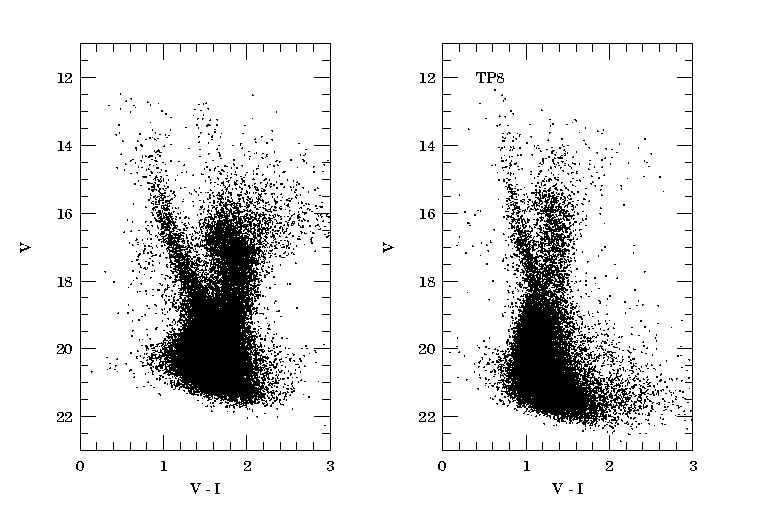The OGLE Experiment. Structure of our Galaxy
The huge amount of photometric data collected during the OGLE microlensing search provides an unique observational material for studies the structure of our Galaxy. Here are short abstracts of two papers:
The Distribution of Galactic Disk Stars in Baade's Window
The color-magnitude diagram of ≈3×105 stars obtained for Baade's Window towards the Galactic Bulge with the OGLE project reveals a surprisingly narrow main sequence due to old disk stars at a distance of ≈2 kpc, i.e., at the location of the Sagittarius spiral arm. The sequence extends down to stars as faint as Mv ≈7, i.e., it is composed of old stars. This is not expected in a conventional disk model, or in a conventional model of a spiral structure. However, a strong concentration of old stars towards spiral arms has been noticed in some other galaxies, like M51. We have also found that the relative distribution of red clump and red giant stars in the Galactic Bulge implies that there is a relatively young stellar population present there.
Color-Magnitude Diagram Distribution of the Bulge Red Clump Stars - Evidence for the Galactic Bar
The color-magnitude diagrams of ≈5×105 stars obtained for 13 fields towards the Galactic bulge with the OGLE project reveal a well-defined population of bulge red clump stars. We find that the distributions of the extinction-corrected apparent magnitudes of the red clump stars in fields lying at l=-5 and l=+5.5 in galactic longitude differ by 0.37±0.025 magnitude. Assuming that the intrinsic luminosity distribution of the red clump stars is the same on both sides of the Galactic center, this implies that the distances to the red clump stars in the two fields differ by a factor of 1.185±0.015. A plausible explanation of the observed difference in the luminosity distribution is that the Galactic bulge is a triaxial structure, or bar, which is inclined to the line of sight by no more than 45° with the part of the bar at the positive galactic longitude being closer to us. This agrees rather well with other studies indicating the presence of the bar in the center of the Galaxy.

Color-Magnitude diagram of two fields BWC and TP8 in the Galactic Bulge
 back
back